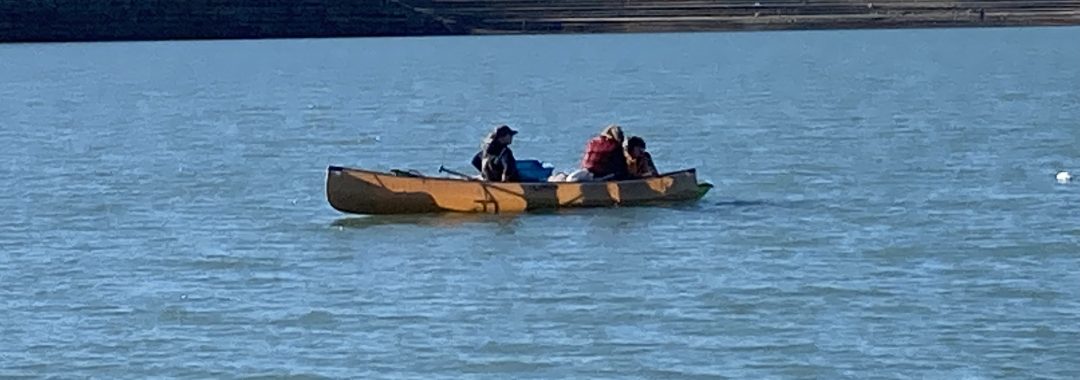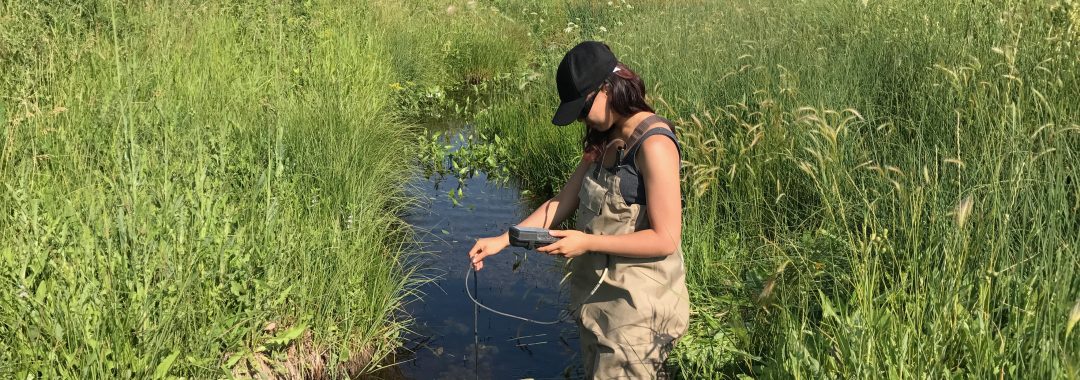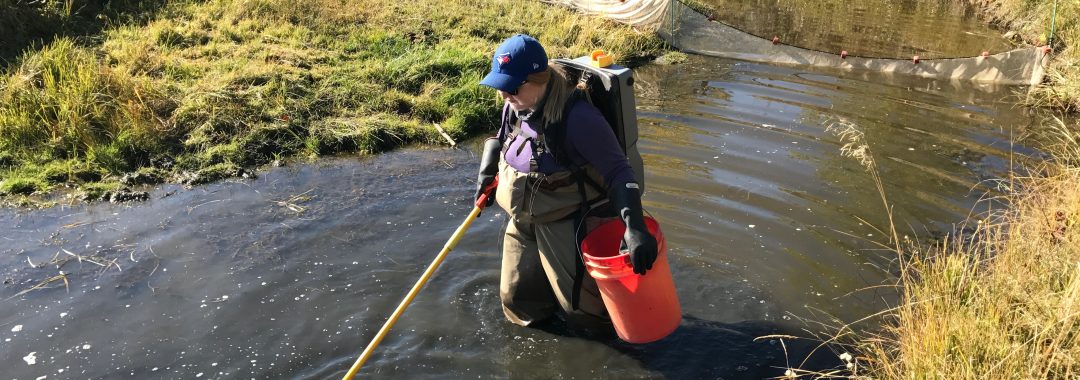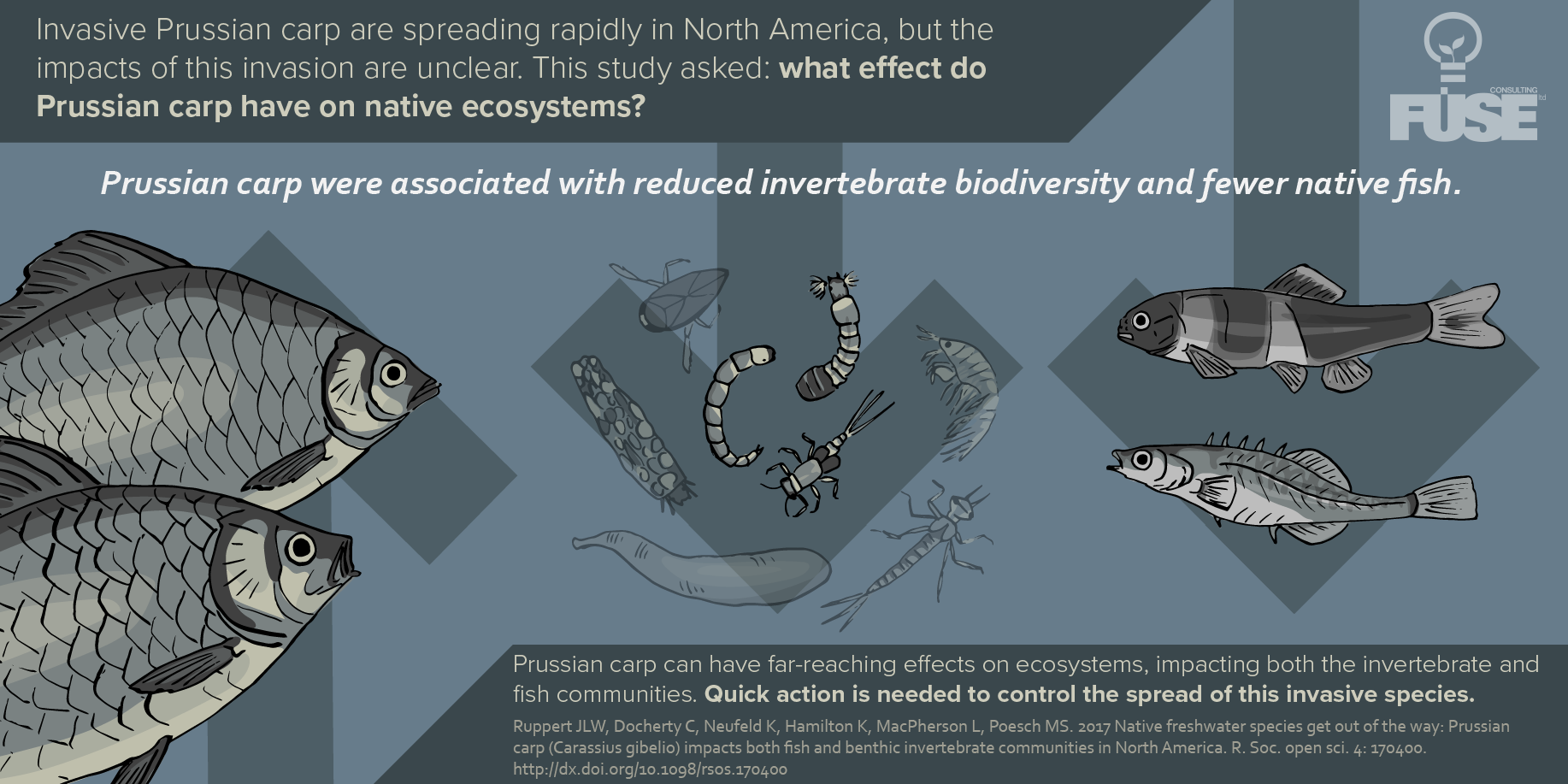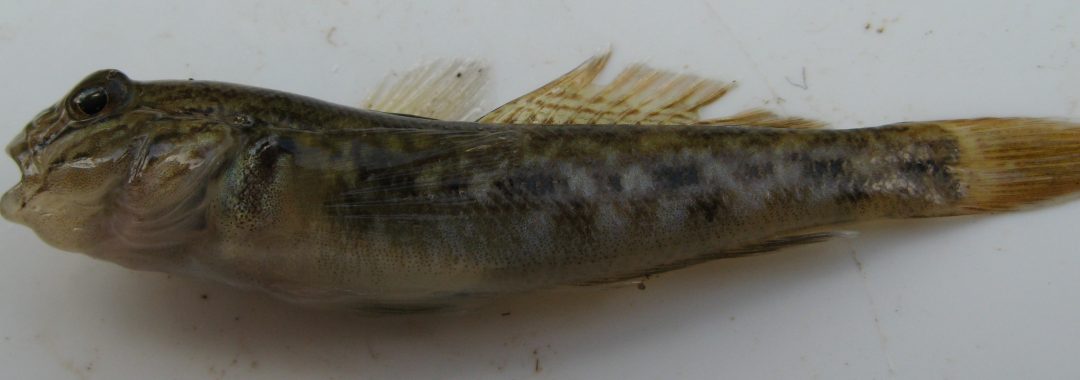Abstract:
Prussian Carp (Carassius gibelio Bloch, 1782) is one of the most successful invasive species in Eurasia. Recently, Prussian Carp were genetically confirmed in Alberta, Canada, documenting the first detection of this species in North America. Given the close morphological similarity to their sister species, the Goldfish (Carassius auratus Linnaeus, 1758), it is likely that this species has been undetected for some time. We document the spread of Prussian Carp since arrival (circa 2000), and contribute a trait-based risk assessment to potential recipient communities in western North America. Using a meta-analysis of geo-referenced fisheries data in conjunction with original sampling in 2014, we show that the Prussian Carp range has increased by eight- to eleven-fold over 15 years in Alberta at a rate of approximately 233–1,250 km2 per year. Range expansions in the near future are possible through the Saskatchewan River drainage and south into the Missouri River basin, with easily accessible routes to Midwestern North America through irrigation canals. We show high life history trait overlap with other successful invasive species, such as Goldfish and Common Carp (Cyprinus carpio Linnaeus, 1758). Additionally, there was high life history trait overlap with several species of native sunfish (Centrarchidae) and suckers (Catostomidae). This study highlights Prussian Carp’s potential to widely impact North American freshwater ecosystems and to successfully compete with native taxa. Considered one of the worst invaders in Eurasia, the arrival of Prussian Carp in North America poses serious concern for fisheries managers. There is an urgent need to develop management plans before further range expansion and disruption of freshwater ecosystems by this new invasive species.
Citation: Docherty, C.*, Ruppert, J.*, Rudolfsen, T.*, Hamann, A., and Poesch, M.S. 2017. Assessing the spread and potential impact of Prussian Carp (Carassius gibelio Bloch, 1782) to freshwater fishes in western North America. BioInvasions Records 6: 291-296.
Spread of Prussian Carp in Alberta, Canada
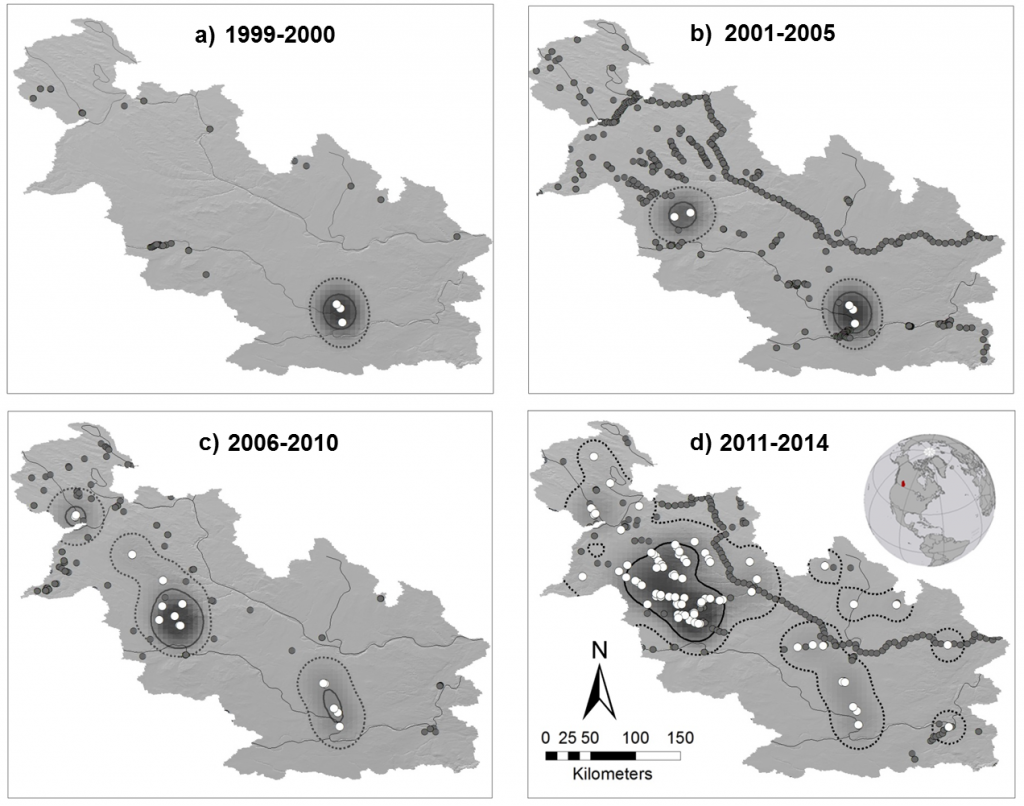
Also Read:
Ruppert, J.L.W.*, Docherty,C.*, Rudolfsen, T.*, Neufeld, K.*, Hamilton, K.*, MacPherson, L. and M.S. Poesch. (2017) Native North American freshwater species get out of the way: Prussian Carp (Carassius gibelio) establishment impacts both fish and macroinvertebrate communities. Royal Society Open Science 4: 170400.
*Lab members: Cassandra Docherty, Jonathan Ruppert, Tyana Rudolfsen, Mark Poesch. Check out opportunities in the lab!


